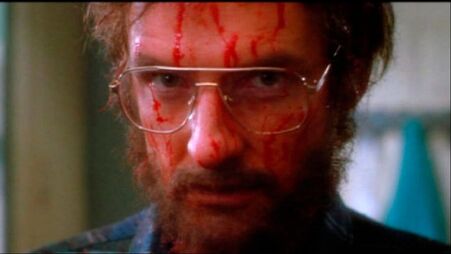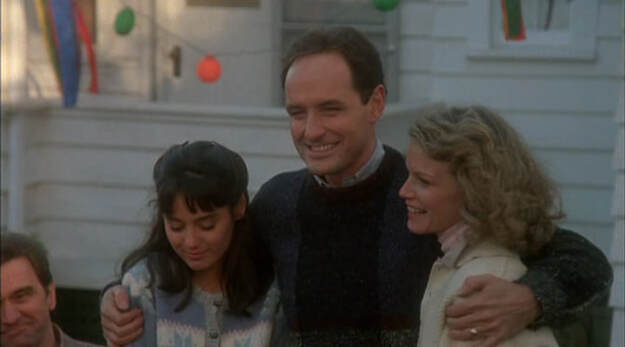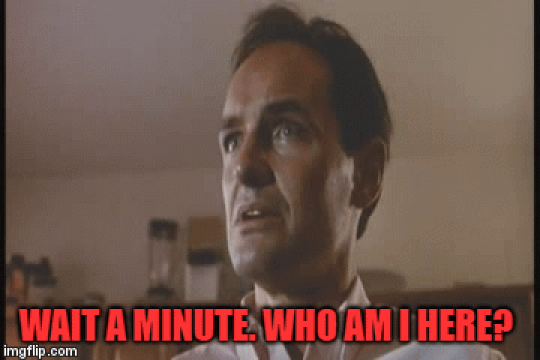 With Father’s Day this today, many movie fans need some holiday viewing to celebrate what fathers bring to the horror world... ...Now horror films have several different types of dads such as oblivious cops, out-of-town business trip goers, or tortured artists, but modern times calls for modern families. So, step aside bio-dads! We appreciate what you do but let the stepdads of the world show what they have to offer our horror family. Since the time of Shakespeare or the later Grimm Brothers, the stepparent offers a level of danger and intrusion into the fairy tale life. However, unlike the stories from hundreds of years ago, 80s films provide a modern spin on the ugly stepparent with the addition of the stereotypical and overbearing boomer. In The Stepfather (1987), Terry O’Quinn (“Lost”) dons the mask of toxic fatherhood which is largely inspired by the baby-boomer mindset. The character’s beliefs come from a past, which already in the 1980s, exists as antiquated expectations for the family unit. And whenever his dream of being the perfect family man hits a bit of a snag, the mask comes off and Daddy Dearest emerges with the strong belief that a dead family is still better than an imperfect family. Despite being a horror movie, The Stepfather follows the stereotypical Lifetime “Movie of the Week” formula as the film presents a very character driven story involving an independent woman allowing a dangerous man to take over her life. The opening sequence starts with the quintessential small town 80s neighborhood as we see the All-American paperboy pedaling care-free down the middle of the street. However, the calmness of suburbia quickly becomes interrupted with a not-so-surprising reveal as we see what happens within the typical yuppie home. In just the first few minutes, the audience witnesses O’Quinn reinvent himself as he calmly leaves a suburban blood bath (which he created) and relocates so he can find another fatherless family to infiltrate. While the 1980s provided horror fans with an overabundance of films, The Stepfather differs from a significant amount of these movies because the viewer knows immediately who the killer is. Instead of hiding the identity of the murderer, heavily hinting at the motives of the stepfather, and leading to a big reveal later in the film, O’Quinn obviously kills everyone in the opening scene. The reason for such an obvious crime is because director Jerry Reuben wanted no sympathy for the leading male character. Meaning, at no point in the film are we expected to doubt our suspicions or side with anyone besides the targeted stepdaughter. So, as Henry Morrison the Murderer transforms himself into Jerry Blake the newlywed, the audience only cares about one mystery: when will he kill again. The mother, Susan Maine (Shelley Hack) takes a backseat in this story, which would make sense because the film is titled The Stepfather and not Susan’s Second Husband. So, the main conflict comes from teenager Stephanie Maine (Jill Shoelen) who refuses to accept Scary Jerry as part of the family. Unfortunately, Jerry does not just want a family, he needs a family! Due to some messed up childhood, traditional family values hold a strong and violent possession over Jerry, and he demands the Leave it to Beaver lifestyle despite the outdated and unrealistic ideals. His “family” obviously refuses to acquiesce, but Jerry does not tolerate anyone going against him. Included with the toxic fatherhood, Jerry believes houses represent ownership of not just property, but the inhabitants as well. Once marrying Stephanie’s mother, the former Maine home becomes “his house” as Jerry decides the rules of the family and enforces his authoritarian law over the women he now “owns.” His profession even involves selling houses, but he insists all the properties should have children. Houses represent a place for family, and the relationship between place and family become so interconnected in Jerry’s mind that just the idea of separating the two enrages the family obsessed man. Within the scope of toxic fatherhood, the man must either remove themselves from the home and the lives of their spouse and children, or he can take a violent and controlling approach to his family. While this portrayal of a patriarchal figure might create unsettling or even triggering effects in some viewers, the handling of the topic in the film provides satisfying results. Watching The Stepfather on Father’s Day may seem like too appropriate of an idea (hopefully) because regardless if you hate your father(s) or enjoy spending time with him, you can appreciate you do not have a Jerry Blake in your life. (You can currently stream The Stepfather 1-3 on Tubi) By Amylou Ahava
0 Comments
Leave a Reply. |
Archives
March 2023
|


 RSS Feed
RSS Feed